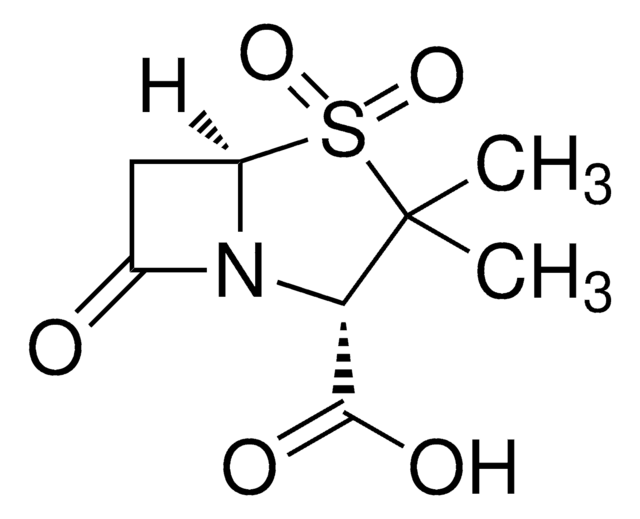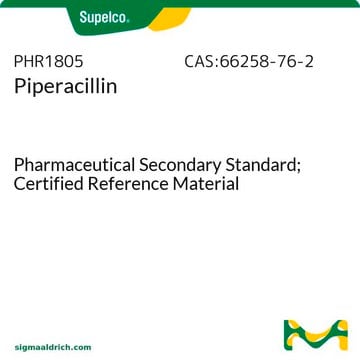PHR1113
L-lactato de sodio
Pharmaceutical Secondary Standard; Certified Reference Material
Sinónimos:
Ácido L-láctico sodium salt, Ácido (S)-2-hidroxipropiónico sodium salt, Ácido sarcoláctico sodium salt
About This Item
Productos recomendados
grado
certified reference material
pharmaceutical secondary standard
Nivel de calidad
Agency
traceable to USP 1614308
familia API
sodium lactate
CofA
current certificate can be downloaded
técnicas
HPLC: suitable
gas chromatography (GC): suitable
mp
163-165 °C (lit.)
aplicaciones
cleaning products
cosmetics
food and beverages
personal care
pharmaceutical (small molecule)
formato
neat
temp. de almacenamiento
2-8°C
cadena SMILES
[Na+].C[C@H](O)C([O-])=O
InChI
1S/C3H6O3.Na/c1-2(4)3(5)6;/h2,4H,1H3,(H,5,6);/q;+1/p-1/t2-;/m0./s1
Clave InChI
NGSFWBMYFKHRBD-DKWTVANSSA-M
¿Está buscando productos similares? Visita Guía de comparación de productos
Descripción general
Aplicación
Nota de análisis
Otras notas
Nota al pie de página
Productos recomendados
Producto relacionado
Código de clase de almacenamiento
11 - Combustible Solids
Clase de riesgo para el agua (WGK)
WGK 1
Punto de inflamabilidad (°F)
Not applicable
Punto de inflamabilidad (°C)
Not applicable
Choose from one of the most recent versions:
¿Ya tiene este producto?
Encuentre la documentación para los productos que ha comprado recientemente en la Biblioteca de documentos.
Los clientes también vieron
Nuestro equipo de científicos tiene experiencia en todas las áreas de investigación: Ciencias de la vida, Ciencia de los materiales, Síntesis química, Cromatografía, Analítica y muchas otras.
Póngase en contacto con el Servicio técnico













